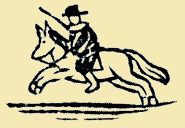- Yes!
- Group Sculptures
- Mirrors
- Sculpture Gallery
- Presents
- Have You Seen My Kitty?
- Magic Hat
- Hotseat, or, The Press Conference
- “I’ll follow you!”: A choral speech
- Three Worlds
- Two-character exchanges
- “Now I am alone”: The soliloquy
- Group voice: Sharing a character
- Showdown: Oberon vs. Titania
- Planning the Project: What do you want your students to achieve?
- Planning the Project: Making room for Shakespeare
- Planning the Project: The Final Performance
- A sample sequence
- Laying the foundation, establishing some rituals
- Preparing for the journey: A checklist
- We shall not cease from exploration

Materials needed:
Open space, room for groups to gather without desks or chairs (move them aside if need be) Time needed:
10-15 minutes Students participating:
everyone at once This is a fun one that can take many forms as the students learn it. There are two main ways to do this: one with partners, one with teams. We’ll describe the partner version, and you can adapt it easily to groups if you want. This activity is good for introducing ideas about physicality, gesture, and expression, and the energy needed to sustain those.
- Students partner up, as in “Mirrors,” and face one another.
- One is the sculptor, one is the clay.
- No one may talk during the sculpting period. This is a working artists’ studio!
- On your signal, the sculptor begins very gently, very gradually, “molding” the clay into a sculpture. When the sculptor moves the subject’s arm, they do it slowly, and move it to where they want it to stay. Then they adjust the fingers, the tilt of the head (slowly!), even the angle of the body, the stance, the facial expression (a challenge). The “clay” must respond as accurately as possible, without grinning, laughing, being silly or distracting.
- It’s up to you whether the sculptures are to have a pre-assigned subject or not. It can be wide-open improvisation. It can also be directed towards a moment in the play: “I want to see your version of Puck surprising the Fairies,” or “Show me Oberon putting a spell on Titania.” In other words, you can use this exercise to lead the group to invent physical gestures for moments in the play, which can then be incorporated into the actual performance.
- The sculptors work for 3-5 minutes, not looking at other sculptors’ work. On your signal, they stop, regard their work, and make a final adjustment.
- When the work is done, you and the sculptors take a Gallery Walk. The sculptures must stay frozen. (For this reason, it’s important to intervene if a sculptor has put someone in an awkward position that cannot be held for the time needed.) You pretend to be an art critic, commenting on the various masterpieces.
- Finally, the sculptures can relax. The tables are turned, A becomes B, and you repeat the process going the other way.
- If done with groups, you might have groups of 3 or 4, and choose one person in each group to be the sculpture. This way more people can take the Gallery Walk at one time. The downside is that in group sculpting, one person usually takes the lead and the others tend to stand back and watch, feeling a bit inhibited.
- At the end, ask people to look at one of the sculptures – if it’s gone, ask the student to recreate it as best they can. Then, for a quick exercise, challenge everyone to “match” the sculpture, gesture for gesture, expression for expression. Boom! As in the “Yes!” game, the transformation should be instantaneous. Then do this again for another sculpture. The idea is to stretch the students’ sense of physical expressiveness.
